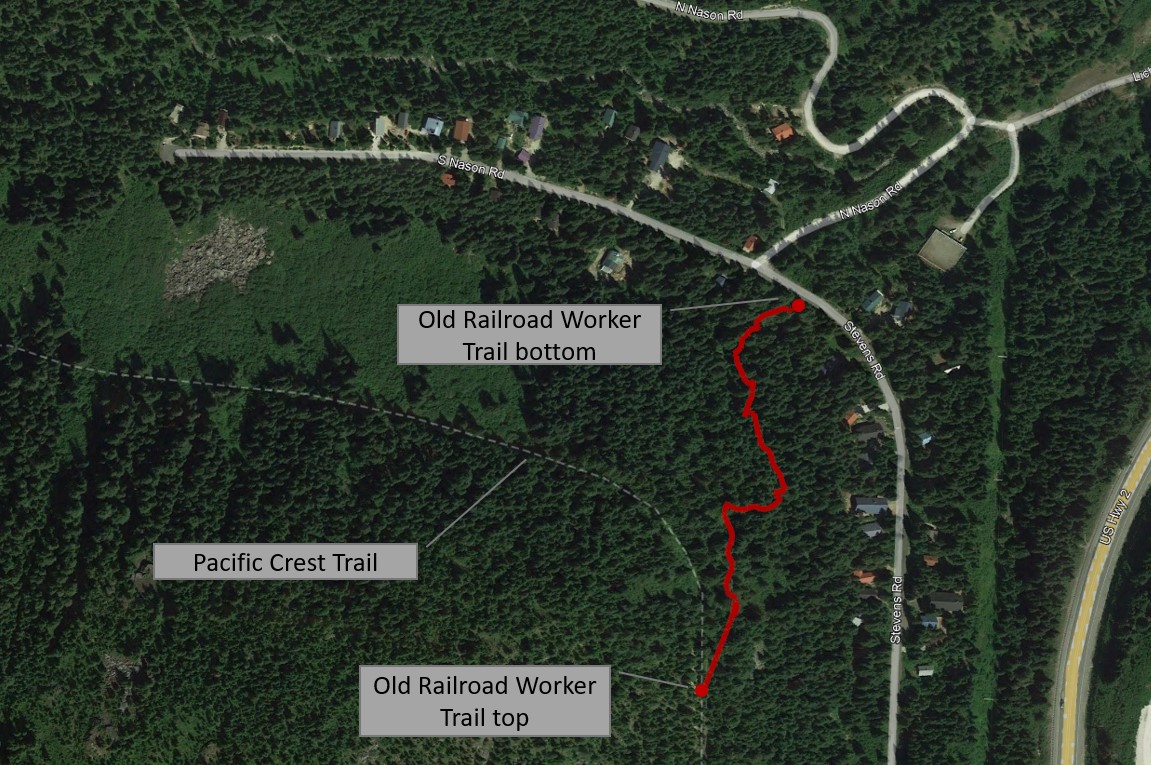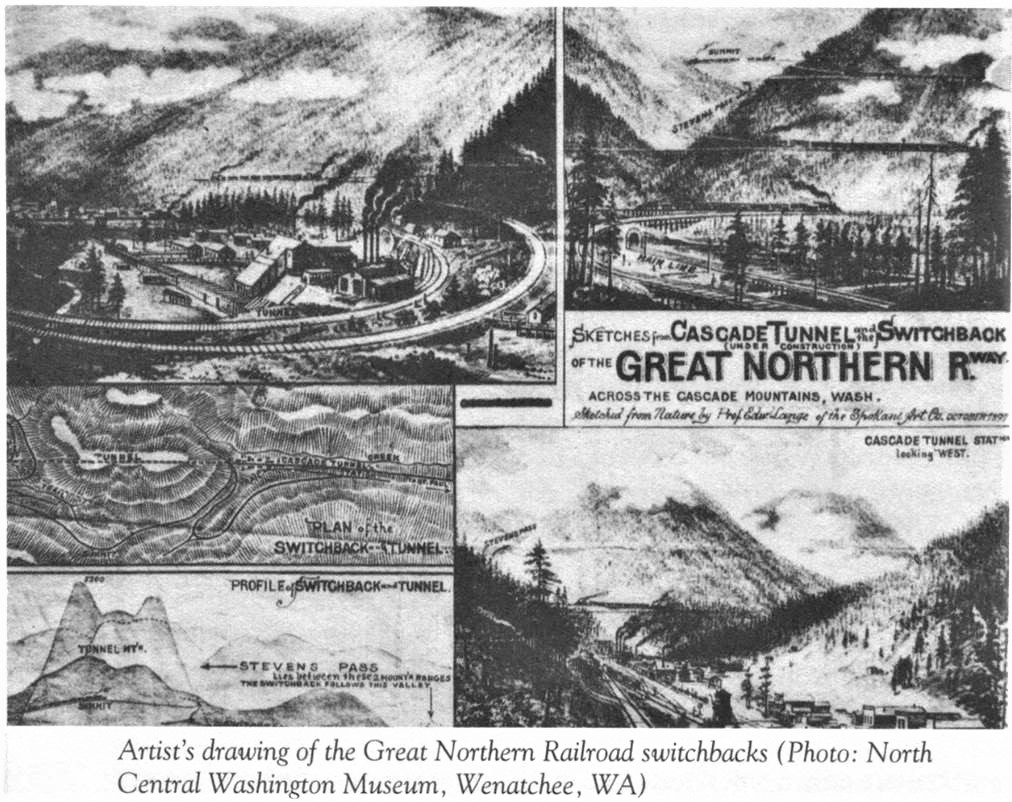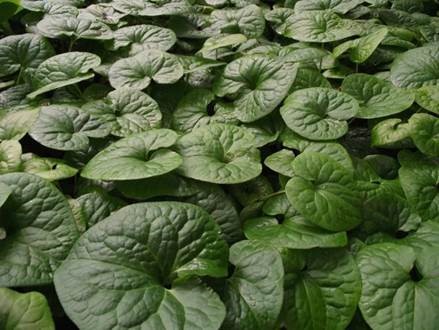There are two different trails that connect from division two and climb up to what is now the Pacific Crest Trail. One begins at the end of division two and the second,
the Railroad Worker Trail starts from the south side of division 1 road right before the division 2 & 3 split.
Where to find it:
The railroad worker trail is a very old (1890s?) trail that climbs up a long diagonal strip of public land directly above where the old cascade tunnel is buried and climbs up to what is now the pacific crest trail (PCT).

History:
Before the tunnel was built the only way to get over the pass was a set of railroad switchbacks. The part of the pacific crest trail that runs above our community is built upon this old switchback railroad grade. If you hike the PCT you may notice how the traverse cut is significantly wider than what is required for a hiking trail… and suddenly goes to normal trail width where it ended a little father up the hill. “The switchback” was apparently an exciting part of the passengers railroad journey – Great Northern railroad at the time even included a little guidebook to customers explaining this part of their exciting railroad adventure.
Circa 1890 the railroad worker trail was the trail workers would use to hike up to the switchback track from the railroad town of cascade in the valley. This enabled them the access needed for performing manual snow removal, track maintenance, etc. This access was quite important since keeping the track open took a lot of work. It was so difficult it lead to the construction of the first Cascasde tunnel so they could retire the switchbacks altogether.
Here is an old drawing of the switchback system in use in 1890 when the tunnel was still under construction. The image on the bottom right shows the area east of the pass: the railroad town of Cascade and switchback beside what is now our yodelin community. It is drawn looking up from what is now the highway if you were driving up from Leavenworth. You can see a little steam train drawn on the switchback that our remaining railroad worker trail climbs up to. The images on the top are of the west side of the pass (former railroad town of Wellington).

The middle left drawing shows the three switchbacks on our side of pass. They were used from 1893 to when the Cascade Tunnel was completed in 1900. The connection between the lower two is actually a hairpin rather than a true switchback, it was built a wooden trestles in the swampy area to the right of Hwy 2 between Yodelin Place and the Pass, and of course has all rotted away now. You can see segments of the 1st switchback down the forest service road up against the bank of Hwy 2. The 2nd switchback ran up the slope behind Hope Lodge, you crossed it on that trail (which is pretty overgrown now) that went up the avy chute next to Hope Lodge (our small water tank that we had torn down last summer was on that switchback). It met the 3rd switchback, which is now part of Pacific Crest Trail (PCT), basically right where the "Railroad worker/Chinese/Japanese trail" meets PCT. You walk over it just as you get to PCT.
Chinese trail?
Many cabin owners in Yodelin still refer to this trail as the “Chinese” trail out of habit although this is likely an inaccurate description. The name came from the fact that western US railroad companies employed chinese laborers in earlier projects however this was unlikely at Steven's Pass. From The Iron Goat Trail: A Guidebook." published by The Mountaineers: "...the Chinese Exclusion Act of 1882 caused a sharp reduction in the availability of Chinese labor, which had been important in the construction of earlier western railroads. The Great Northern then turned to Japanese labor contractors who recruited workers from Japan and supervised their labor...". According to Yodelin cabin owner Ed Burns: “there were workers from basically every ethnic group. As you can imagine, the working conditions were terrible and the employee turnover was tremendous. One of the small RR towns between Scenic and Wellington was called ‘Corea’ after the Korean workers who had camped there. One of Jim Hill's (president of Great Northern) quotes was: ‘give me enough Swedes and whisky and I can build a railroad to hell.’ He didn't say anything about Norwegians though”
The wild ginger that grows near the top of the railroad worker trail is actually a native plant, Western Wild Ginger (Asarum caudatum), and not the result of a theoretical 1800s asian railroad worker community. It doesn’t have the thick rootstock for cooking like the variety you see in the grocery store. Still smells wonderful, however.

Where to find it:
The railroad worker trail is a very old (1890s?) trail that climbs up a long diagonal strip of public land directly above where the old cascade tunnel is buried and climbs up to what is now the pacific crest trail (PCT).

History:
Before the tunnel was built the only way to get over the pass was a set of railroad switchbacks. The part of the pacific crest trail that runs above our community is built upon this old switchback railroad grade. If you hike the PCT you may notice how the traverse cut is significantly wider than what is required for a hiking trail… and suddenly goes to normal trail width where it ended a little father up the hill. “The switchback” was apparently an exciting part of the passengers railroad journey – Great Northern railroad at the time even included a little guidebook to customers explaining this part of their exciting railroad adventure.
Circa 1890 the railroad worker trail was the trail workers would use to hike up to the switchback track from the railroad town of cascade in the valley. This enabled them the access needed for performing manual snow removal, track maintenance, etc. This access was quite important since keeping the track open took a lot of work. It was so difficult it lead to the construction of the first Cascasde tunnel so they could retire the switchbacks altogether.
Here is an old drawing of the switchback system in use in 1890 when the tunnel was still under construction. The image on the bottom right shows the area east of the pass: the railroad town of Cascade and switchback beside what is now our yodelin community. It is drawn looking up from what is now the highway if you were driving up from Leavenworth. You can see a little steam train drawn on the switchback that our remaining railroad worker trail climbs up to. The images on the top are of the west side of the pass (former railroad town of Wellington).

The middle left drawing shows the three switchbacks on our side of pass. They were used from 1893 to when the Cascade Tunnel was completed in 1900. The connection between the lower two is actually a hairpin rather than a true switchback, it was built a wooden trestles in the swampy area to the right of Hwy 2 between Yodelin Place and the Pass, and of course has all rotted away now. You can see segments of the 1st switchback down the forest service road up against the bank of Hwy 2. The 2nd switchback ran up the slope behind Hope Lodge, you crossed it on that trail (which is pretty overgrown now) that went up the avy chute next to Hope Lodge (our small water tank that we had torn down last summer was on that switchback). It met the 3rd switchback, which is now part of Pacific Crest Trail (PCT), basically right where the "Railroad worker/Chinese/Japanese trail" meets PCT. You walk over it just as you get to PCT.
Chinese trail?
Many cabin owners in Yodelin still refer to this trail as the “Chinese” trail out of habit although this is likely an inaccurate description. The name came from the fact that western US railroad companies employed chinese laborers in earlier projects however this was unlikely at Steven's Pass. From The Iron Goat Trail: A Guidebook." published by The Mountaineers: "...the Chinese Exclusion Act of 1882 caused a sharp reduction in the availability of Chinese labor, which had been important in the construction of earlier western railroads. The Great Northern then turned to Japanese labor contractors who recruited workers from Japan and supervised their labor...". According to Yodelin cabin owner Ed Burns: “there were workers from basically every ethnic group. As you can imagine, the working conditions were terrible and the employee turnover was tremendous. One of the small RR towns between Scenic and Wellington was called ‘Corea’ after the Korean workers who had camped there. One of Jim Hill's (president of Great Northern) quotes was: ‘give me enough Swedes and whisky and I can build a railroad to hell.’ He didn't say anything about Norwegians though”
The wild ginger that grows near the top of the railroad worker trail is actually a native plant, Western Wild Ginger (Asarum caudatum), and not the result of a theoretical 1800s asian railroad worker community. It doesn’t have the thick rootstock for cooking like the variety you see in the grocery store. Still smells wonderful, however.


Questions?
Email: webmaster@yodelin.org